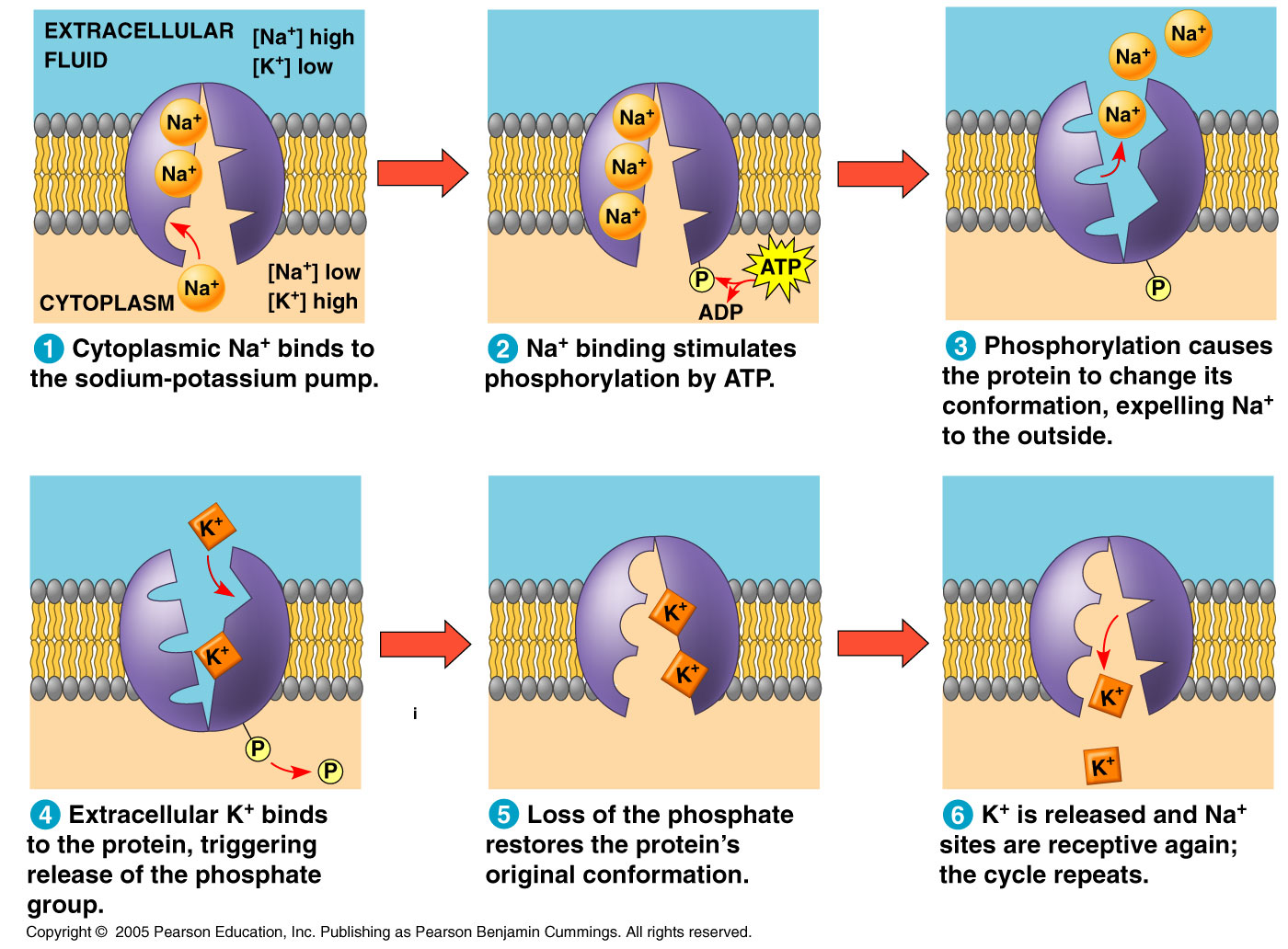Movement of Substance Across the Plasma Membrane
Diffusion Passive Transport 2. Carrier proteins change shape as they.

Ab Transport Concept Map Cell Membrane Cell Membrane Transport Cell Membrane Structure
The cell membrane or plasma membrane is the structure that keeps cytoplasm from spilling out of a cell.

. Web Like all other cellular membranes the plasma membrane consists of both lipids and proteins. It is a thin flexible coating around the cells of all living things. Transport across cell membrane is classified into four ways.
Such movement across the membrane is aided by the electric charge and pH. Passive transport mechanisms include diffusion osmosis. Web Cell membrane regulates movement of substance into and out of the cell.
The cell membrane is selectively permeable meaning that each cells membrane allows only certain specific substances to pass through. Web A third mechanism for movement across the plasma membrane is facilitated diffusion. That is the substance is temporarily bound to another substance that transports it across the cell membrane where it is released.
This is usually to accumulate high concentrations of molecules that a cell needs such as glucose or amino acids. The fundamental structure of the membrane is the phospholipid bilayer which forms a stable barrier between two aqueous compartments. Cell wall In bacteria and plant cells the outermost cell cover present outside the plasma membrane is the cell wall about which we shall study now.
Web Active transport is the movement of a substance across a membrane against its concentration gradient. In such cases drug delivery to systemic. Since small molecules equilibrate freely across the outer membrane of the mitochondrion the pH in the intermembrane space is the same as in the cytosol 2.
By structure it is a porous membrane with pores which permits the movement of selective substances in and out. Web However drugs injected IM or subcutaneously must cross one or more biologic membranes to reach the systemic circulation. Web Analogously a plasma membranes functions involve movement within the cell and across boundaries in the process of intracellular and intercellular activities.
6 to 30 characters long. However other molecules are unable to pass through the membrane. The journals editor Yasmin Khakoo MD.
Cell membranes are semi-permeable barrier separating the inner cellular environment from the outer cellular. The cell membrane is the outer covering of a cell within which all other organelles such as the cytoplasm and nucleus are enclosed. It is also referred to as the plasma membrane.
Must contain at least 4 different symbols. It is often described as the plasma membrane. Cell membrane acts as a barrier to most but not all molecules.
This is due to newswire licensing terms. This process requires energy and is at risk of. This membrane is composed of phospholipids which form a lipid bilayer that separates the contents of a cell from the extracellular fluidThe lipid bilayer is semi-permeable meaning that only certain.
Web The cell membrane is present in all the cells. Web It generates a pH gradient across the inner mitochondrial membrane with the pH higher in the matrix than in the cytosol where the pH is generally close to 7. Web The article you have been looking for has expired and is not longer available on our system.
Cell transport refers to the movement of substances across the cell membrane. An example of active transport occurs in human nerve cells. Web These membranes allow almost any food or waste substance to pass through.
Web Active transport involves the movement of a substance across the membrane of the absorbing cell against an electrical or chemical gradient. If the process uses chemical energy such as adenosine triphosphate ATP it is called primary active transport. Figure 810 Some substances are able to move down their concentration gradient across the plasma membrane with the aid of carrier proteins.
Web It is the passive movement of molecules along a concentration gradient. Web The movement of substances across the membrane can be either passive occurring without the input of cellular energy or active requiring the cell to expend energy in transporting it. Bacterial cell wall is made up of peptidoglycan.
It is a selective process meaning that only certain molecules and ions are allowed to pass through the membrane. If the cell membrane fails to function normally the cell dies. The cell must expend energy that is usually derived from a substance called adenosine triphosphate or ATP see Chapter 4.
ASCII characters only characters found on a standard US keyboard. If protein drugs with a molecular mass 20000 gmol are injected IM or sc movement across capillary membranes is so slow that most absorption occurs via the lymphatic system. Web Pediatric Neurology publishes timely peer-reviewed clinical and research articles covering all aspects of the developing nervous systemPediatric Neurology features up-to-the-minute publication of the latest advances in the diagnosis management and treatment of pediatric neurologic disorders.
Web The cell membranes four primary functions include cell signaling selective transport excretion of wastes and structural support. Here sodium ions are constantly transported out of the cell into the. Web Cell Membrane.
Some substances small molecules ions such as carbon dioxide CO2 and oxygen O2 can move across the plasma membrane by diffusion which is a. In the case of the plasma membrane these compartments are the inside and the outside of the cell.

Chapter 3 Movement Of Substances Across The Plasma Membrane Diagram Quizlet
Transport Of Substances Across Cell Membranes Deranged Physiology

Chapter 3 Movement Of Substances Across The Plasma Membrane By Pardip Sidhu

Cell Membrane Transport Transport Across A Membrane How Do Things Move Across A Cell Membrane Youtube

What Is The Movement Of Substances Across The Plasma Membrane Against A Concentration Gradient That Requires Energy Socratic
Chapter 7 Transport Across Cellular Membranes In Fundamentals Of Cell Biology On Openalg
0 Response to "Movement of Substance Across the Plasma Membrane"
Post a Comment